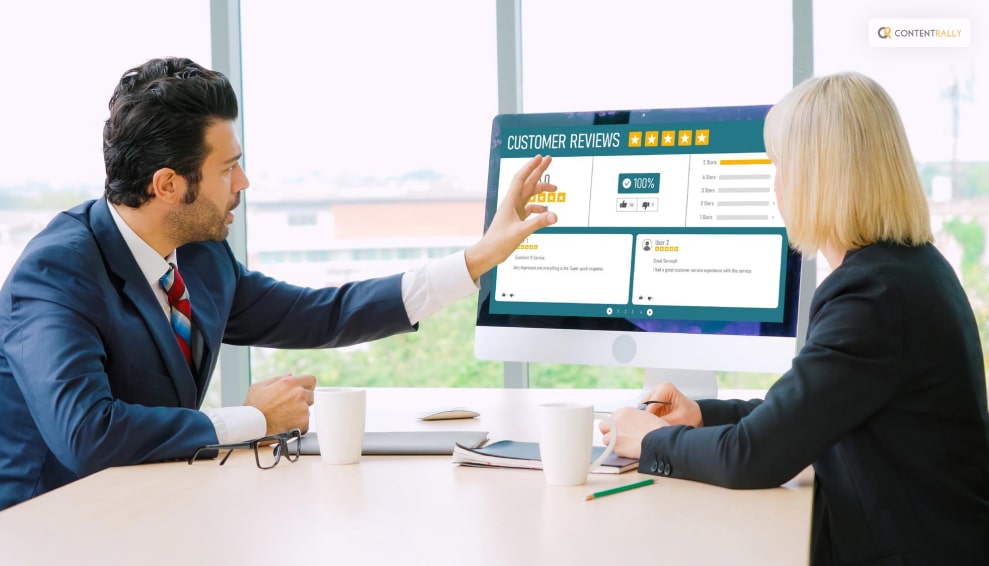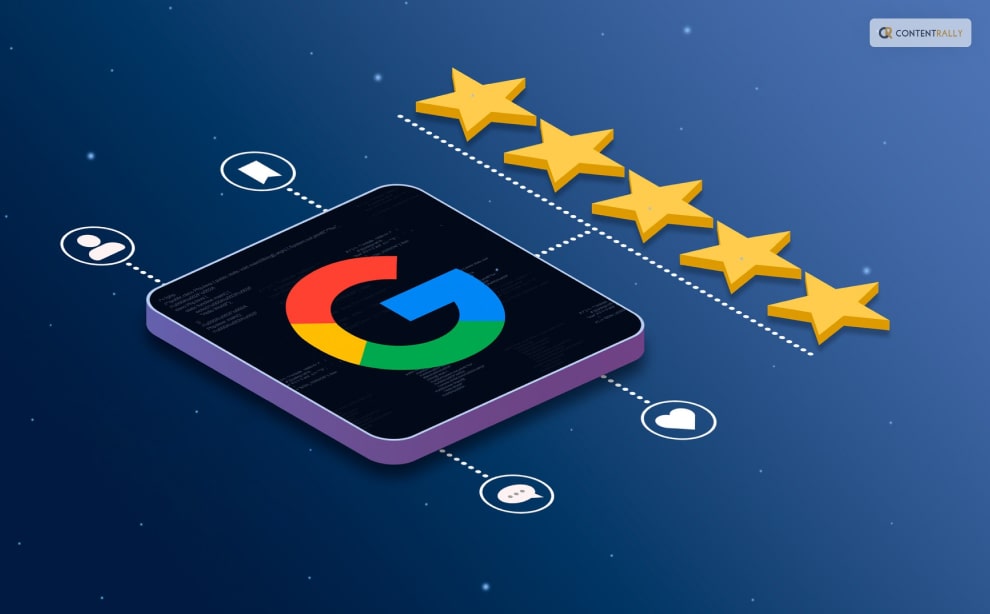Do you want to know the answer to “how to find my Google reviews?” if your answer is a YES, then you have reached the right place!
Google reviews are by far the most genuine and trustworthy source of online feedback on a physical or online business’s service or product. Before purchasing a product, customers from all over the world read the review section.
A report from a survey says that before buying a product or service online, 8-10 reviews are read. One thing is certain: a company’s online reputation can be made or broken by online reviews.
However, many individuals and business owners have difficulty viewing their Google reviews. And if you are one of them, this article is the best one for you.
Keep reading to find out more about Google reviews…
My Google Reviews: What Are Google Reviews?

Google Reviews are reviews and comments left by people who have used or interacted with a business or establishment and want to share their experience with others. These reviews are created by Google users.
Anyone who searches for the company or reads its listing on Google Maps or Google Search will be able to access these reviews because they are published on Google’s platform.
Google Reviews have a significant impact on a company’s credibility and reputation. They offer useful insights into the quality of the products, services, and customer experiences, as well as customer satisfaction with the company as a whole.
Users can express their opinions, provide specific details about their experience, and offer recommendations or cautions to potential customers in the written comment section of each review, which includes a star rating (ranging from one to five stars).
Businesses can manage and respond to reviews, interact with customers, and address any concerns or issues raised in the feedback by claiming their Google My Business listing. Businesses can demonstrate their dedication to customer satisfaction and earn the trust of potential customers through this interaction.
Because they provide first-hand insights from actual customers, Google Reviews are widely used by consumers to make informed decisions about where to spend their money. Because experiences can vary, it is important to take into account multiple reviews and evaluate the overall consensus rather than relying solely on individual opinions.
How To See My Google Reviews?

To see Google reviews for a specific business, you can follow these steps:
- Open a web browser and go to www.google.com.
- In the search bar, enter the name of the business you want to find reviews for. You can include the city or location for more accurate results.
- Press Enter or click on the “Search” button.
- In the search results, look for the Google Knowledge Panel on the right-hand side of the page. The Knowledge Panel typically includes information about the business, including its address, phone number, and reviews.
- Scroll down the Knowledge Panel until you find the “Reviews” section. Here, you will see a summary of the overall rating (in the form of stars) and the total number of reviews.
- To read individual reviews, click on the “Reviews” section, and you will be presented with a list of reviews left by customers. You can scroll through the reviews and click on each one to view the full review and any accompanying comments.
How To See My Google Reviews Through Google Maps?

Alternatively, you can also access Google reviews through Google Maps:
- Open a web browser and go to www.google.com/maps.
- In the search bar, enter the name of the business you want to find reviews for. Again, you can include the city or location for more accurate results.
- Press Enter or click on the “Search” button.
- In the search results, click on the business listing that matches your search.
- The business’s Google Maps listing will appear, including its location on the map and various details.
- Look for the “Reviews” section on the left-hand side of the screen. Here, you will see an overview of the business’s rating and the total number of reviews.
- Click on the “Reviews” section to view the individual reviews. You can scroll through the reviews, click on each one to read the full review, and see any accompanying comments.
Please note that you may need a Google account to leave reviews or interact with the reviews section. However, you can typically read reviews without having an account.
How To Add My Google Reviews?

To add your own Google review for a business, you can follow these steps:
- Make sure you have a Google account. If you don’t have one, you can create a Google account by going to accounts.google.com and clicking on “Create account.”
- Open a web browser and go to www.google.com.
- In the search bar, enter the name of the business you want to review. You can include the city or location for more accurate results.
- Press Enter or click on the “Search” button.
- In the search results, find the business listing you want to review and click on it.
- The business’s Google Knowledge Panel will appear on the right-hand side of the page. Scroll down until you find the “Write a review” button and click on it.
- A pop-up window will appear, allowing you to rate the business using a star rating system (ranging from 1 to 5 stars).
- After selecting your star rating, you can provide a written review by clicking on the text box provided. Here, you can share your experience, provide feedback, or offer recommendations to others.
- You can also include photos or videos related to your experience by clicking on the camera icon or the “Add photos” button.
- Once you are satisfied with your review, click on the “Post” button to submit it.
Your review will be published on Google, contributing to the business’s overall rating and providing valuable feedback to other users. Remember to write a fair and honest review based on your personal experience with the business.
How To Edit My Google Reviews?

To edit a Google review you’ve previously posted, you can follow these steps:
- Open a web browser and go to www.google.com.
- Click on the “Sign In” button located at the top right corner of the page and log in to your Google account. Make sure to use the same account you used when writing the review.
- After signing in, enter the name of the business for which you want to edit the review in the search bar. Include the city or location if needed for more accurate results.
- Press Enter or click on the “Search” button.
- In the search results, find the business listing associated with your review and click on it.
- The business’s Google Knowledge Panel will appear on the right-hand side of the page. Scroll down until you find your review.
- Under your review, you should see three dots or an “Edit” button. Click on these options.
- If you see three dots, click on them and then click on “Edit review” in the dropdown menu. If you see an “Edit” button directly, click on it.
- A pop-up window will appear, allowing you to make changes to your review.
- Edit the rating, text, or any other information you wish to modify.
- Once you’ve made the desired changes, click on the “Save” or “Update” button to save your edited review.
Your updated review will then be published on Google with the changes you made. It’s important to note that you can only edit your own reviews, not those written by others.
How Can My Google Reviews Make A Difference?

Now that you know almost everything about Google reviews, let me tell you how it can help and make a difference. Take a look at some of these points below:
1. Influence Potential Customers
When people are researching a product or service, potential customers may be directly influenced by your reviews. Your positive review can boost their ; and influence their decision in favor of that company. Your own personal experience and advice can have a significant impact on other people’s decisions.
2. Impact The Business’s Reputation
Your reviews contribute to the overall reputation of the business. Positive reviews provide social proof and enhance the credibility of the business. Conversely, negative reviews can have a detrimental effect. By sharing your positive experiences, you can contribute to building a positive reputation for the business.
3. Provide Feedback To The Business
Your reviews offer valuable feedback to the business owners and management. By highlighting what you liked about their products or services, you provide insights into what they are doing well. Additionally, if you mention areas for improvement, it can help the business identify areas where they can enhance their offerings or customer experience.
4. Encourage Improvement
Constructive feedback in your reviews can motivate businesses to make improvements. When they see specific suggestions or areas that need attention, it can inspire them to take action and make necessary changes. Your review can contribute to driving positive change within the business.
5. Help Small And Local Businesses
Leaving reviews for small or local businesses can have a significant impact. These businesses often heavily rely on positive word-of-mouth and online reviews to attract customers. Your review can help them gain visibility, stand out from competitors, and thrive in their community.
6. Foster A Culture Of Quality And Customer Service
By praising businesses that deliver excellent products, services, or customer experiences, you contribute to fostering a culture of quality and customer service. Your positive reviews encourage businesses to maintain high standards and prioritize customer satisfaction, benefiting both the business and future customers.
7. Create A Sense Of Community
Engaging with businesses through reviews creates a sense of community and connection. Your reviews can foster a supportive environment where consumers share their experiences, provide recommendations, and contribute to the collective knowledge base. This helps create a vibrant online community that values transparency and shared experiences.
Remember, your reviews hold power, and sharing your genuine experiences and opinions can make a difference not only for the businesses but also for other consumers seeking reliable information.
Bonus: What Are The Benefits Of Google Reviews For Business?

Google Reviews offer several advantages for businesses as well as consumers. Here are some key advantages:
1. Increased Visibility
Positive reviews can improve a business’s visibility in Google Search and Google Maps. Higher ratings and a greater number of reviews can enhance the business’s online presence, making it more likely to appear in relevant search results and attract potential customers.
2. Trust And Credibility
Reviews from real customers help establish trust and credibility for a business. Positive reviews act as social proof, assuring potential customers that others have had positive experiences. This can encourage them to choose the business over competitors.
3. Customer Engagement
Google Reviews provide an avenue for businesses to engage directly with their customers. Responding to reviews, whether positive or negative, demonstrates attentiveness and a commitment to customer satisfaction. It allows businesses to address concerns, provide clarifications, and express gratitude for positive feedback, fostering a positive brand image.
4. Customer Insights
Reviews offer valuable insights into customer preferences, opinions, and expectations. By analyzing the feedback, businesses can gain a better understanding of their target audience, identify areas for improvement, and make informed decisions to enhance their products or services.
5. Competitive Advantage
Maintaining a high rating and positive reviews can give a business a competitive edge. Potential customers often compare businesses based on their ratings and reviews, and a positive online reputation can attract more customers, even in the presence of competitors.
6. SEO Benefits
Google Reviews contribute to search engine optimization (SEO) efforts. Positive reviews can improve a business’s local search ranking, making it more likely to appear prominently in relevant search results. This can drive more organic traffic to the business’s website or physical location.
7. Word-Of-Mouth Marketing
Positive reviews act as digital word-of-mouth recommendations. Customers who have had positive experiences may share their reviews with friends, family, or colleagues, potentially expanding the business’s reach and attracting new customers.
It is worth noting that while positive reviews offer numerous advantages, negative reviews can also provide opportunities for businesses to address issues, improve their offerings, and showcase their dedication to customer satisfaction. Responding professionally and constructively to negative reviews can help mitigate any potential negative impact.
Wrapping It Up!
In case you were searching about My Google Reviews and the ways in which you can edit, see, and add them on the internet, I hope that this article has been of help to you. If there are any other queries related to the same, feel free to let me know. All that you need to do is scroll down till you reach the bottom of the page. Then leave your comments and queries in the box below. And I will be there to answer them all for you!
Learn More About:






















